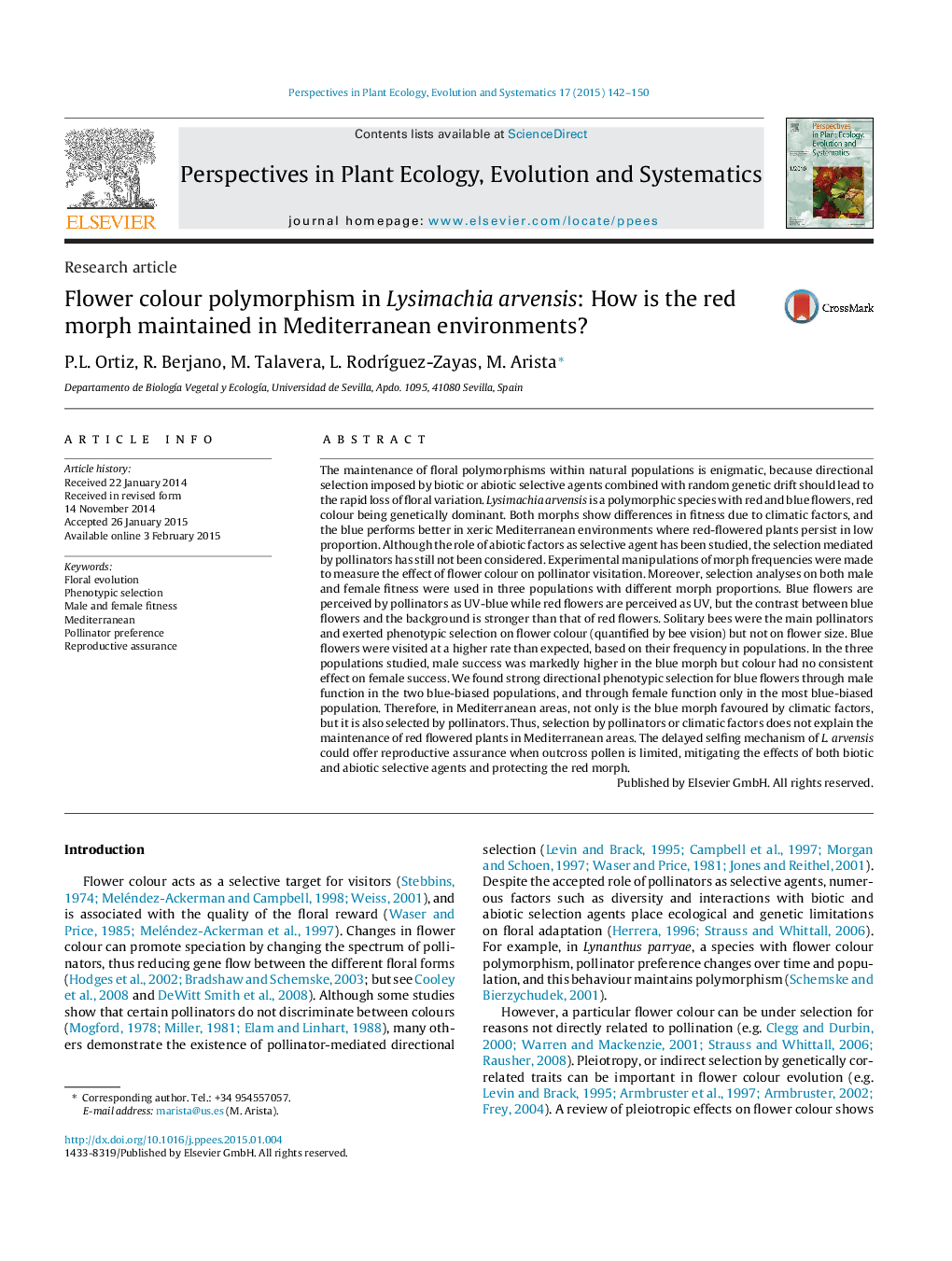| Article ID | Journal | Published Year | Pages | File Type |
|---|---|---|---|---|
| 4400992 | Perspectives in Plant Ecology, Evolution and Systematics | 2015 | 9 Pages |
The maintenance of floral polymorphisms within natural populations is enigmatic, because directional selection imposed by biotic or abiotic selective agents combined with random genetic drift should lead to the rapid loss of floral variation. Lysimachia arvensis is a polymorphic species with red and blue flowers, red colour being genetically dominant. Both morphs show differences in fitness due to climatic factors, and the blue performs better in xeric Mediterranean environments where red-flowered plants persist in low proportion. Although the role of abiotic factors as selective agent has been studied, the selection mediated by pollinators has still not been considered. Experimental manipulations of morph frequencies were made to measure the effect of flower colour on pollinator visitation. Moreover, selection analyses on both male and female fitness were used in three populations with different morph proportions. Blue flowers are perceived by pollinators as UV-blue while red flowers are perceived as UV, but the contrast between blue flowers and the background is stronger than that of red flowers. Solitary bees were the main pollinators and exerted phenotypic selection on flower colour (quantified by bee vision) but not on flower size. Blue flowers were visited at a higher rate than expected, based on their frequency in populations. In the three populations studied, male success was markedly higher in the blue morph but colour had no consistent effect on female success. We found strong directional phenotypic selection for blue flowers through male function in the two blue-biased populations, and through female function only in the most blue-biased population. Therefore, in Mediterranean areas, not only is the blue morph favoured by climatic factors, but it is also selected by pollinators. Thus, selection by pollinators or climatic factors does not explain the maintenance of red flowered plants in Mediterranean areas. The delayed selfing mechanism of L. arvensis could offer reproductive assurance when outcross pollen is limited, mitigating the effects of both biotic and abiotic selective agents and protecting the red morph.
